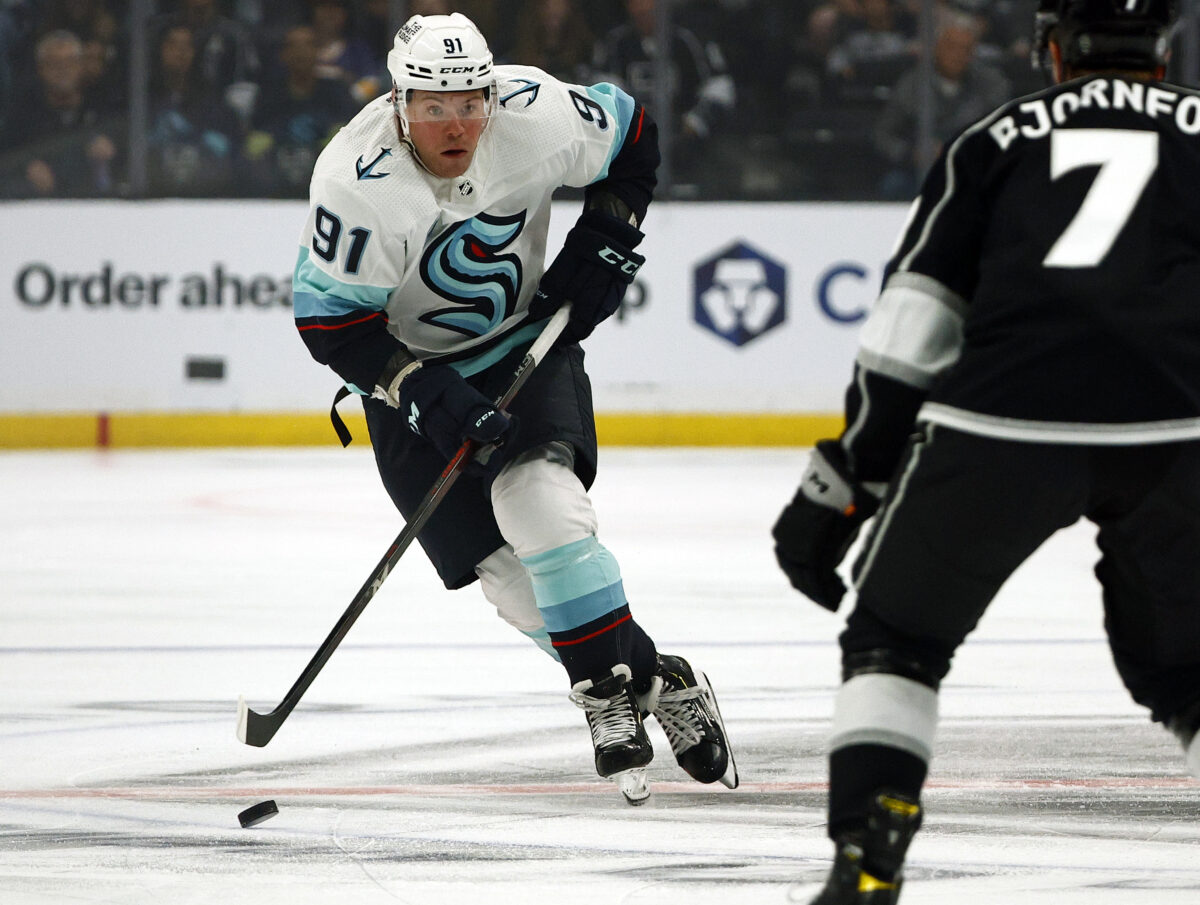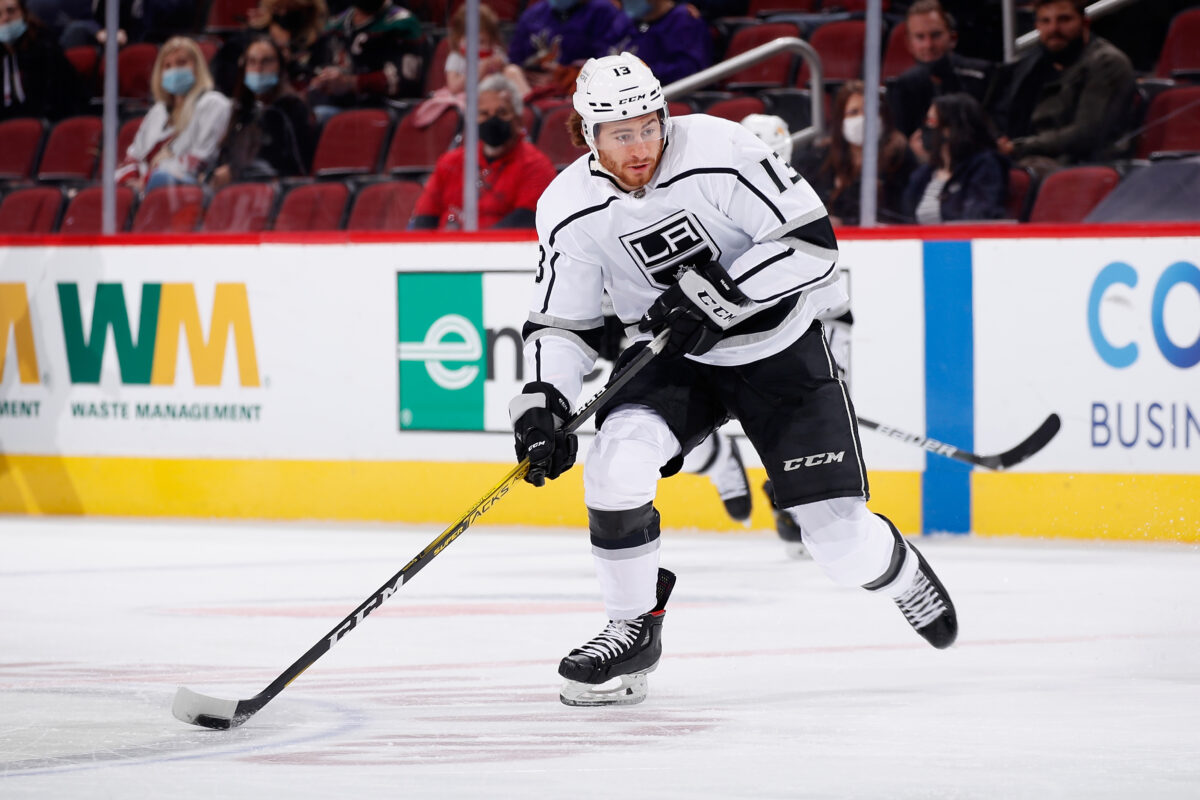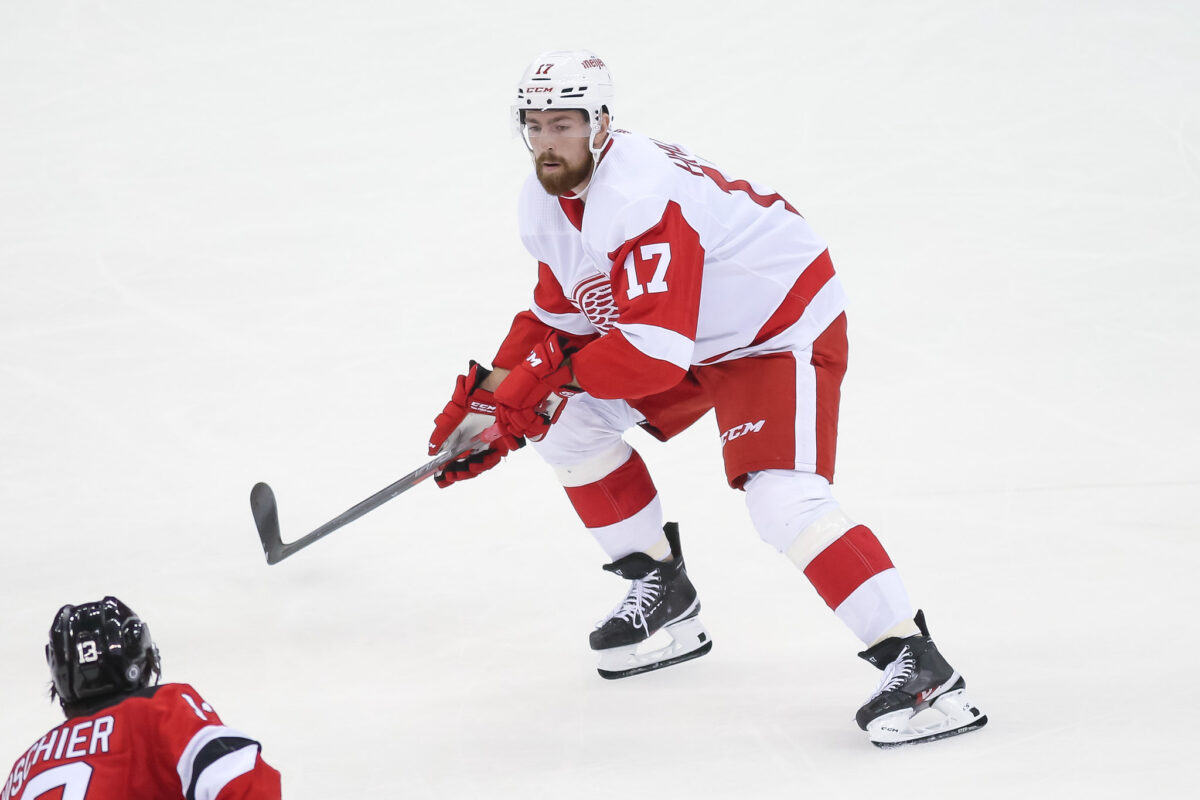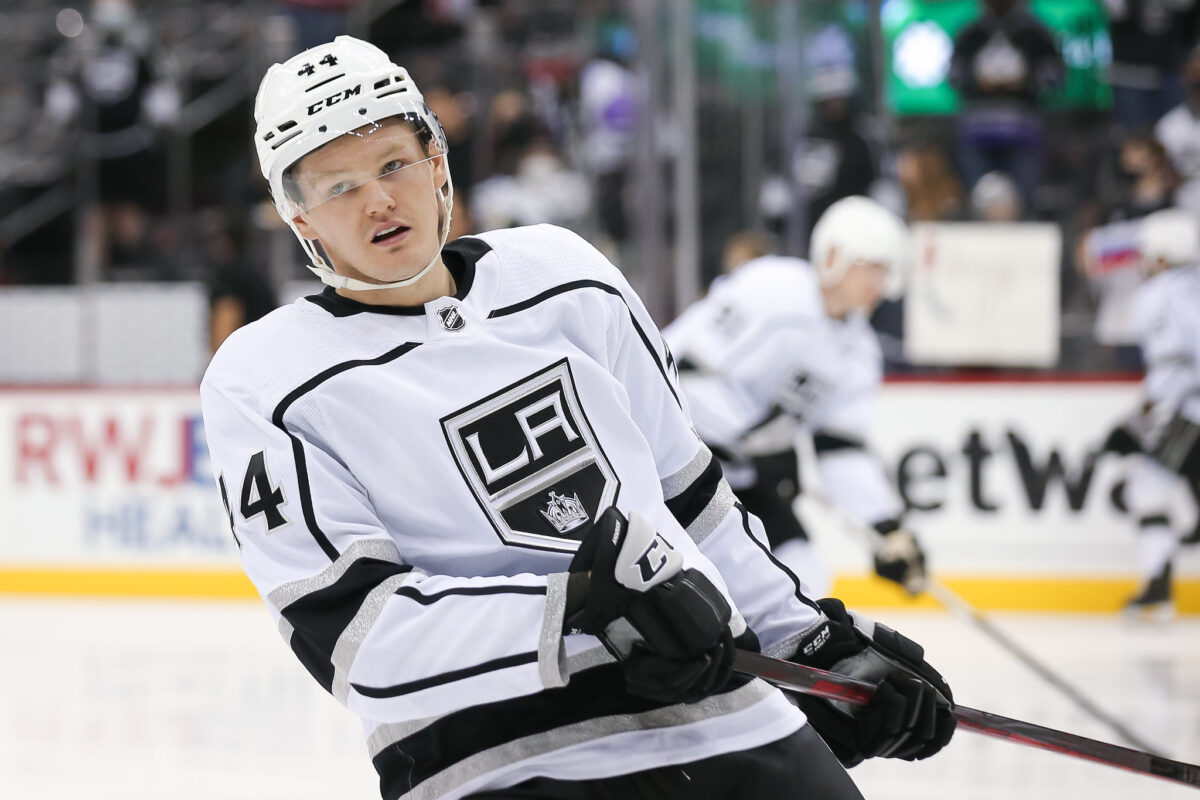The NHL recently passed the midway point of the 2022-23 season and named the first batch of players to represent their teams at the 2023 All-Star Game, consisting of 32 players. This group featured familiar names such as Connor McDavid, Alexander Ovechkin, and Sidney Crosby, several of the league’s best and brightest.
Given that they regularly stuff the stat sheet and subsequently rank atop the scoring leaderboards, it’s no surprise that those superstars once again find themselves heading to the NHL’s midseason showcase. League-defining stars receive a majority of the plaudits and rightly so, but that means that fan and media attention is diverted from individuals who make a significant impact on the ice, but don’t garner proportionate levels of recognition.
Instead, I’ve decided to name a starting lineup — and a second team of honourable mentions — of players who grade out as some of the league’s best by modern analytical metrics. These players are unlikely to be named to the All-Star Game after the ensuing fan vote and are relatively underrated by the general public, whether it’s because of lower scoring totals, playing in a smaller market, performing in a lower role, or some blend of all three.
For a more detailed rundown on the metrics that I reference below as well as an explanation for why focusing solely on scoring totals is misguided, take a look at The Hockey Writers’ Advanced Analytics Primer. With that, let’s dive into the five skaters and a goalie whose play this season warrants greater recognition from the NHL community.
Forward: Daniel Sprong, Seattle Kraken
Initially drafted by the Pittsburgh Penguins in 2015, winger Daniel Sprong has bounced around the NHL and made additional stops with the Anaheim Ducks and Washington Capitals. The analytics crowd has touted Sprong for what seems like an eternity, but it’s with the Seattle Kraken, who traded for him last season, that he’s finally delivering on his second-round draft stock.
After scoring 70 points in 202 NHL games prior to this season (0.28 points per game (P/G)), Sprong’s 26 points in 34 games this season (0.76 P/G) represents a huge jump in his rate of production.
What’s more impressive than nearly tripling his scoring rate is that he’s tied for third on the Kraken in goals and seventh in points despite playing just over 11 minutes in all situations. In fact, his per-60-minute production and chance generation rates put him among the NHL’s elite forwards.

Among forwards to have played 200 minutes in all situations, Sprong ranks sixth in goals per 60, and seventh in primary assists and points per 60. He’s carving out chances with regularity as well, with his per-60 rates in shots (12th) and scoring chances (73rd) also putting him at a top-line level.
Sprong does face easier competition and ranks 38th in shooting percentage (SH%) at 17.3 percent, but he’s capitalized on his minutes nonetheless. He may never graduate to a more elevated role, but he’s been one of the most efficient scorers over the past three seasons, ranking sixth in goals per 60, 69th in points per 60, and 24th in scoring chances per 60 at 5-on-5 among qualified forwards.
Sprong is an invaluable depth piece whose offensive contributions are welcome on a roster bereft of truly elite talent. He’s one of the best stories on the team and a big reason for the Kraken’s unexpected success midway through 2022-23.
Forward: Gabriel Vilardi, Los Angeles Kings
In a similar, but different vein to Sprong, Gabriel Vilardi looks to have finally carved out a permanent role with the Los Angeles Kings after navigating inconsistency and significant injuries. After lighting up the American Hockey League (AHL) with 38 points in 39 games last season, Vilardi has approached the heights expected of him as an 11th-overall draft pick (2017) in 2022-23.
The 23-year-old forward has already set or tied career highs in goals (17, second on the Kings), assists (13) and points (30) through 44 games, and could realistically double those totals by season’s end.
Vilardi is benefitting from an unsustainable finishing streak with his 18.5 percent shooting at 5-on-5, ranking 15th among qualified forwards. Yet, he does rank 75th in both individual expected goals (ixG) and scoring chance (iSCF) generation among forwards, so he’s still creating opportunities at a first-line rate at 5-on-5. He won’t continue to convert on nearly a fifth of his shots in all situations, but it’s not as though his numbers are solely the byproduct of finishing luck, either.

Vilardi also impacts play in one of the more underrated ways that don’t show up on the scoresheet: drawing penalties. His 19 drawn penalties are tied for sixth among all skaters, and his penalty differential (plus-14) is tied for second-best in the entire league, behind only Jack Hughes. The Kings own the eighth-ranked power play (24.4 percent), so having players who can put their top players on the ice in advantageous situations is a skill in and of itself, one in which Vilardi is very proficient.
After seeing his career stall in the early going, it’s nice to see a highly-touted player find his footing. With the Kings poised to become one of the Western Conference’s newest power brokers in the near future, Vilardi will play a big part in their march to the throne.
Forward: William Carrier, Vegas Golden Knights
Since their inception, the Vegas Golden Knights have collected underappreciated gems and William Carrier, one of seven players from Vegas’ inaugural roster still with the team, is one of said gems. He’s never filled up the scoresheet (his 20 points last season represent a career high), but he’s regularly dominated bottom-six usage to create a significant competitive advantage for the Golden Knights.
At 5-on-5, Carrier’s 1.31 goals per 60 put him just outside the top 30 among qualified forwards, and his rate of shots, ixG, iSCF, and high-danger chances (iHDCF) all rank 41st or higher. Most notably, Carrier is generating 6.3 iHDCF per 60, eighth among all forwards and ahead of the likes of Tage Thompson (14th), Kyle Connor (26th), and Jason Robertson (32nd).
You may also like:
- 3 Rangers Not Named Kreider or Trouba Who Could Be Traded
- Guy Boucher to Coach KHL Side Avangard Omsk
- 5 Chicago Blackhawk Candidates for the 2025 World Junior Championships
- 3 Potential Trade Destinations for Senators’ Josh Norris
- Predicting Team Sweden’s 2025 World Junior Championship Roster
Carrier benefits from a lighter workload against weaker competition (he ranks 216th in average 5-on-5 ice time), but there’s still some sticker shock when seeing his name beside the NHL’s top offensive players. He does most of his work off of the rush and grades out as above-average in terms of his rate of completed controlled zone entries (with possession of the puck), pushing the pace for a feisty Golden Knights club.
Carrier is scoring at a 21-goal pace and is on track to set a new benchmark in points (currently at 11 goals and 15 points), so it’s about time that the Golden Knights’ unheralded worker bee gets his due.
Defenseman: Filip Hronek, Detroit Red Wings
The Detroit Red Wings have struggled to make good on lofty preseason expectations as a result of a busy offseason, but Filip Hronek has done his best to drag the team to an elusive playoff berth. The 25-year-old rearguard is producing at a 14-goal, 59-point pace, which would both represent new career highs, but it’s his ability to drive play that should get the bulk of the attention.
Among qualified defenders at 5-on-5 (minimum 300 minutes), Hronek has posted the third-best relative mark for scoring chances, seventh-best for high-danger chances, and 11th-best for expected goals. The term “relative” refers to how a player’s team fares when he’s on the ice versus when he’s on the bench. So, one would say that the Red Wings account for nine percent more of the share of scoring chances when Hronek plays, compared to when he sits.

Hronek’s relative rates easily pace the Red Wings, and both Moritz Seider and Ben Chiarot — Detroit’s most commonly used defensive pairing this season — both rank in the bottom 40 in terms of scoring chances.
It should be noted that, unlike Seider, Hronek is not shackled to Chiarot, one of the worst defensemen in the league in terms of shot- and chance-share over the past few seasons. Seider actually fares fairly well when playing away from Chiarot, and it’s becoming obvious that Chiarot is the anchor on the pair, and not in a good way.
His younger peer has trudged through the first half of the season, but the elder Hronek is doing his part to pick up the slack, rightfully earning darkhorse Norris buzz for his play this year.
Defenseman: Mikey Anderson, Los Angeles Kings
The Los Angeles Kings have assembled one of the best blue lines in the NHL who, outside of veteran lynchpin Drew Doughty, are underappreciated throughout the league. One of the most under-the-radar names is 23-year-old Mikey Anderson, now in his third full NHL season.
Anderson’s offensive totals don’t pop out at you (he’s only scored 11 points in 45 games this season) but his presence is integral to the Kings’ success. The team leans on him heavily at 5-on-5 where he is their second-most used defenseman behind Doughty, ranking 19th in the league overall (18:35 minutes per game).
Even with such heavy deployment, Anderson ranks 41st or higher among qualified defenders in terms of the rate at which the Kings concede shots and scoring chances. Much of his value is derived from his ability to prevent opposing teams from entering the Kings’ defensive zone, and his decision-making when starting breakouts from his own end.

Despite being targeted on zone entries at one of the highest rates in the league, Anderson is a brick wall on the blue line. He allows 1.36 entries per 60 that end up in a scoring chance, the second-lowest rate in the league behind only perennial Norris Trophy contender Adam Fox. He also only allows opponents to successfully carry the puck into the zone on 45 percent of entry attempts, once again among the lowest percentages at his position.
Anderson doesn’t bear the majority of the workload of moving the puck — Doughty is his defensive partner — but he ranks second on the team in terms of the lowest rates of failed zone exits. He’s never going to be the lead initiator in transition, but it helps when he can be trusted to at least not cough up costly turnovers in dangerous areas.
In Doughty and the promising duo Sean Durzi and Brandt Clarke, the Kings are stocked with puck-moving talent on the back end. Anderson offers a different, but just as crucial dimension on the blue line, and helps Los Angeles quickly jumpstart their transition efforts. He may never get most of the plaudits, but he’s one of the most underrated defenders kicking around the league.
Goaltender: Anton Forsberg, Ottawa Senators
The mainstream methods used to evaluate goaltenders lag behind more modern tools of analysis. Raw save percentage (SV%) and goals-against average (GAA) fail to account for a netminder’s environment and the quality of their workload. Instead, the metric known as goals saved above expected (GSAx) is taking greater precedence in analytical circles. Simply put, GSAx is calculated by subtracting actual goals conceded from a goalie’s expected goals against.
By emphasizing the discrepancies in shooting environments, we can get a clearer picture of which goalies are succeeding because of the team in front of them, and which are succeeding in spite of their defensive shields.
The Ottawa Senators’ Anton Forsberg is one such goalie as, although he’s posted unremarkable surface-level numbers, his performance grades out as one of the league’s best according to GSAx and the like. Among qualified goaltenders (minimum 15 games played), the 30-year-old ranks 21st in SV% (.909) and 30th in GAA (3.04), but 11th in cumulative GSAx (plus-8.5) and seventh in GSAx per 60 minutes.

The Senators are a below-average defensive team, ranking 18th in expected goals against (xGA) and 19th in scoring chances against (SCA) per 60 at 5-on-5. As a result, it follows that Forsberg typically faces a more difficult workload than Linus Ullmark for example, who plays in front of the defensively elite Boston Bruins.
Forsberg has only made 21 appearances on the year (28th among all goalies) so using the per-60-minute version of GSAx demonstrates how much of a difference he’s made when he has played. Almost all of the goalies ranking ahead of him have received Vezina Trophy votes in the past or are rightfully stealing headlines this season (like Ullmark). So, Forsberg takes the honour of being the most underrated netminder this season.
Analytics All-Stars: Honourable Mentions
After naming a starting lineup of underrated players, here are an additional six honourable mentions representing a secondary lineup of analytical All-Stars:
Forward: Owen Tippett, Philadelphia Flyers
Forward: Stefan Noesen, Carolina Hurricanes
Forward: Josh Leivo, St. Louis Blues
Defenseman: Brett Kulak, Edmonton Oilers
Defenseman: Nick Seeler, Philadelphia Flyers
Goaltender: Filip Gustavsson, Minnesota Wild
There you have it. Ten players whose underlying statistical profile suggests that, in a different universe, would receive serious All-Star Game consideration. Are there any other underappreciated gems deserving of wider recognition? Share your thoughts and let me know in the comments!
Data courtesy of AllThreeZones, Evolving Hockey, Hockey Reference, MoneyPuck, and Natural Stat Trick.